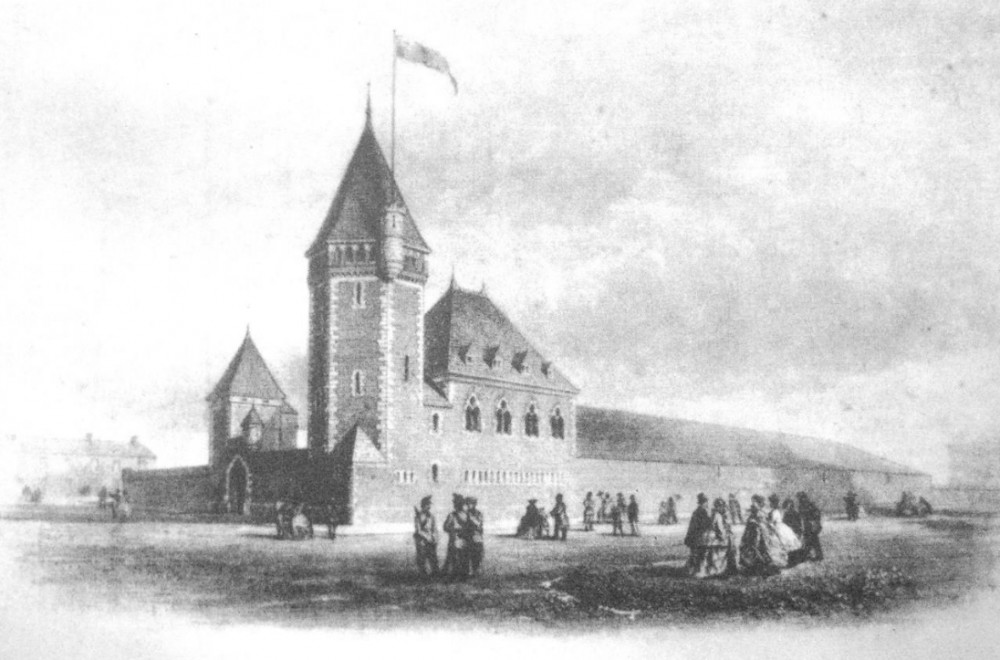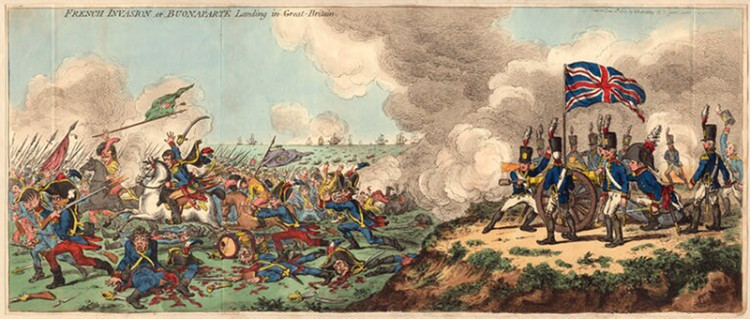The origins of the Stockport Armoury
By Nub News guest writer 12th Jun 2025
By Nub News guest writer 12th Jun 2025

By Jill Trumble - Stockport Heritage Trust
The Armoury was built in 1862, to accommodate the Stockport Loyal Rifle Volunteers.
These Stockport townsmen had answered the call to volunteer in the face of national fears of a French invasion, but it was not the first time that these loyal men had volunteered their services for the defence of the realm.
The Napoleonic threat of incursion at the end of the nineteenth century led to the formation of volunteer movements all over Great Britain.
In Stockport, many men came forward in 1794. They were formed into companies, who were trained in military exercises but distinguished by age; the older men were classed together for home service only, were armed with long pikes and known as 'The Grenadiers' or 'Pikemen', but were locally called 'The Old Fogies'.
The main body were known as 'The Stockport Loyal Volunteers' and were mostly infantry, but included some riflemen and a company of cavalry. The were reviewed by regular army officers several times but were never engaged in military conflict and were disbanded in 1802.

In 1803, Britain declared war on France 'The National Defence Act' was passed and Stockport men once again came forward as volunteers. Seven divisions were formed in and around the area, viz the 'Stockport Cavalry', 'Stockport Loyal Volunteers', 'Stockport Volunteers', 'Stockport Riflemen', 'Poynton, Worth, Norbury, and Bullock Smithy Volunteers', 'Dukinfield Infantry' and 'Heaton Norris Volunteers' comprising over 1200 men.
None of these groups was engaged in military service but continued on duty until the defeat of the French at the Battle of Waterloo in 1815.
In 1859, there was a national fear that England was once more under threat of a French offensive and again volunteers were enrolled for the defence of the nation. Meetings were held in Stockport in November 1859, when it was resolved that six volunteer companies should be formed consisting of 500 men, and a subscription was to be raised for these rifle corps.
Subscriptions of £960-11-0d, to Stockport Volunteer Rifle Corps, were promised within the week and the sum had increased to £1531-12-0d by the middle of January 1860.
Discussion took place about the amount paid by the volunteers for an annual subscription and contribution towards uniforms and equipment.
The initial cost had been set at 10 shillings but some members of the committee thought that an increase to 20 shillings per annum was preferable as they 'wanted to make the corps respectable' and thought that some applicants could be coerced into joining just to get the uniform which may be disposed of for gain.

A uniform of light grey with red furnishings priced at £4-5-0 with one belt or £4-18-0 with belt and pouch was considered by the committee, but the style of uniform was objected to and no decision made at that time, but by March, new uniforms began to be received.
By February 1860, the six companies were completed with both officers and men under the command of Captains, Henry Coppock, John Thomas Emmerson, Samuel Wright Wilkinson, Thomas Hardcastle Sykes, Cephas John Howard, and John Marsland Lingard respectively.
In the absence of more suitable accommodation for all the corps to meet, large warehouse on Shawcross Fold, previously occupied by William Hickton, skip maker, was utilised as an armoury for Corps 1, 2, 5 and 6 with the upper floor being used for regimental band practice. Corps 3 and 4 were accommodated in St. Thomas's schoolroom on Higher Hillgate.
The corps met on separate evenings in the week for drills, and marches took place all around the town that were followed by the public. They also had drills in fields near to the houses of their captains and on the Woodbank estate.
By early 1861 it had become evident that barrack accommodation was needed and a vacant plot of land on Greek Street, owned by James Dakin, was swiftly acquired for the purpose of erecting a shed to be used as an armoury, and a house for the sergeant major, the buildings to be walled in. The Manchester Mercury of 30 March 1861 reported that the land had been secured and was in the ownership of the volunteers by June.
The Armoury was designed by Henry Bowman and built by local contractors at a cost of £5.000. A building fund was formed and subscriptions of £2,900 were raised by the volunteers themselves, the remainder being donated by public subscription.
The main building consisted of a large covered drill room, an armoury and adjutant's rooms on the ground floor, officers' and men's quarters on the second floor and on the third floor, in the roof, accessed through the hexagonal octagonal tower, was a room for band practice.
There were some ancillary buildings and a house for the sergeant major, with the site being surrounded by a turreted curtain wall. The buildings were completed by the end of the year and were first used by no.1 company, commanded by Major Coppock, on 29th January 1862.
Another £2,000 was needed towards the building fund. A ladies' committee had been formed with the intention of raising more money for the building fund and to that end they organised a four day bazaar and fancy fair to take place after the official opening day of the Armoury. The bazaar was opened by the Mayor, Robert McClure, on April 22nd l862 and attended by William Gladstone, chancellor of the exchequer.
The drill hall was decorated with amber, pink, blue and white draperies. Seven highly coloured stalls adorned each side exhibiting drawings, painting, engravings, furniture, needlework and all manner of ceramics and glassware, trinkets, floristry, souvenirs and a lavish refreshment stall. An abundance of flags completed the adornment of the room.
In the middle of the hall was an eight foot high fountain surrounded by flowering plants. A popular attraction was the fortune teller housed in a separate booth. In an enclosed space set up as a museum were geological specimens, fossils, minerals, Chinese artefacts, coins and seals, ornaments, weaponry, military arms, bronzes, taxidermy and varieties of ferns that were very popular in the Victorian era.
Music was provided by an orchestra and the military band to entertain the crowds who attended, dressed in their best finery.
Unfortunately, the outdoor amusements that included pavilions for acrobats, Punch and Judy and Aunt Sally's were poorly attended due to heavy rain and the wet ground.
The first day's receipts, including donations amassed £834 towards the building fund. At the close of Saturday the amount raised was over £2,000.
As years passed money continued to be raised for the building fund for alterations and repairs to the Armoury. Most of the buildings are still standing today and the Armoury is still in use as an Army Reserve Centre for the Mercian Regiment (formerly the Cheshires) and for social functions.
~
Those interested in learning more about Stockport's heritage can visit the heritage centre Tuesday 11am – 2pm and Saturday 10.30 – 2pm. The centre is situated inside St. Mary's Parish Church, Market Place, on the left hand side past the cafe.
The heritage trust also opens the former courthouse and dungeon to the public on the second Saturday of every month, from 10.30am until 3.30pm, or when the last visitor leaves.
The trust's website can be found HERE
~
Free from clickbait, Stockport Nub News is a quality online newspaper for our town.
To get our top stories in your inbox each week, subscribe to our free weekly newsletter HERE.
Please consider following Stockport Nub News on Facebook or X
CHECK OUT OUR Jobs Section HERE!
stockport vacancies updated hourly!
Click here to see more: stockport jobs
Share:






















